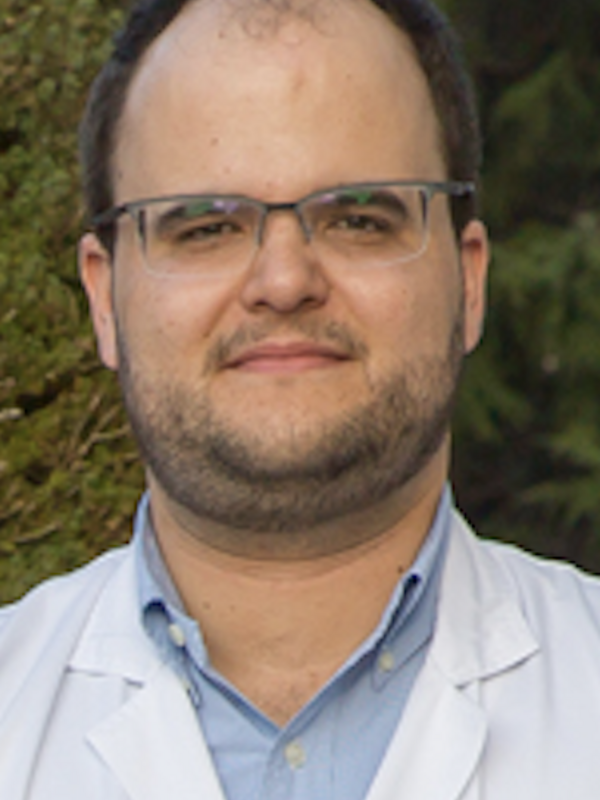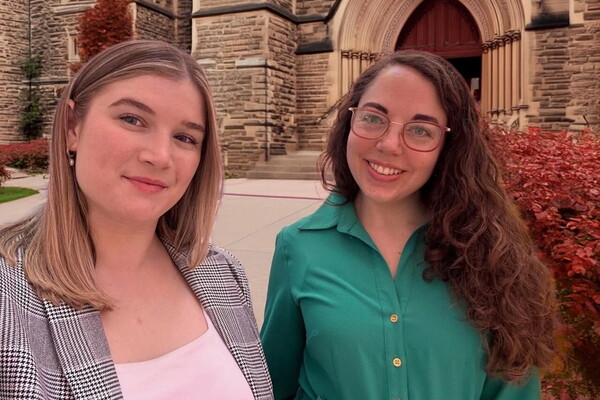Main Second Level Navigation
Breadcrumbs
- Home
- News & Events
- Recent News
- Tanz Centre Study Pinpoints Molecular Subtypes Among Lewy Body Disorders
Tanz Centre Study Pinpoints Molecular Subtypes Among Lewy Body Disorders
University of Toronto researchers have found important subtypes within Lewy body disorders, a group of neurodegenerative diseases that includes Parkinson’s disease. The subtypes reflect differences in the activity of the protein alpha-synuclein in different brain regions.
The research spans Parkinson’s disease, Parkinson’s disease with dementia, and dementia with Lewy bodies, which are harmful buildups of protein in the brain that form when alpha-synuclein starts to misfold and aggregate.

“This study was a proof of concept that if you do a molecular characterization of Lewy body disorders, you can find subgroups of patients that you cannot find with conventional techniques,” said Ivan Martinez-Valbuena, first author on the paper and a postdoctoral fellow in the lab of Gabor Kovacs, a scientist in the Tanz Centre for Research in Neurodegenerative Diseases at U of T’s Temerty Faculty of Medicine.
The journal Acta Neuropathologica published the findings this summer.
The wide variability of Lewy body disorders is a significant challenge to understanding them. “What we know from these diseases is that a lot of people are affected, but the clinical symptoms and the duration of the disease are very heterogenous,” said Martinez-Valbuena.
To uncover molecular differences among the disorders, the research team employed a novel and multi-pronged approach, using an ultra-sensitive seeding assay, in vitro toxicity assays, detailed neuropathological and biochemical examinations, and proteomic profiling.
“Patients may be clinically heterogeneous, but under a microscope, what we see in the brain is very similar,” said Martinez-Valbuena.
The study team analyzed the post-mortem brains of 30 patients with Lewy body disorders, examining eight “hard-hit” brain regions. They used their recently developed, more sensitive version of an existing assay called real-time quaking-induced conversion (RT-QuIC; see “Related Research” below) to examine how quickly a misfolded alpha-synuclein protein can convert another “healthy” alpha-synuclein into a misfolded one, a process called seeding.
At the same time, neurologists led by Professor Anthony Lang, also a scientist in the Tanz Centre, analyzed the clinical history of the 30 patients and identified four specific groups based on their symptoms:
- Group 1: motor-predominant symptoms, corresponding to typical Parkinson’s disease
- Group 2: onset of motor and cognitive symptoms together or within one year, corresponding to dementia with Lewy bodies
- Group 3: cognitive-predominant symptoms, with a later emergence of parkinsonism
- Group 4: cognitive impairment without any motor symptoms.
The researchers found two of the groups differed in alpha-synuclein activity in different brain regions. Alpha-synuclein was more aggressive and able to misfold faster in the substantia nigra region of the brain, which helps control movements, among patients with motor predominant symptoms (group 1) than in patients with cognitive-predominant symptoms (group 3). On the flip side, alpha-synuclein activity was more aggressive in the hippocampus, which has a major role in learning and memory, among patients with cognitive-predominant symptoms than patients with motor-predominant symptoms. “The alpha-synuclein behaves differently in these two groups,” said Martinez-Valbuena.
The team also identified that patients with the most rapid disease progression (less than three years from onset to the development of advanced disease) had the most aggressive alpha-synuclein in the substantia nigra.
Currently, no treatment can reverse or stop the progression of Lewy body disorders, and identifying subtypes of these diseases will enable research into specific targets, with the goal of developing specific treatments.
“Similar to the progress made in developing treatments for specific types of cancer, subtypes of Lewy body disorders will help us create personalized medicine strategies for neurodegenerative disorders,” said Martinez-Valbuena.

This study was supported by the Edmond J. Safra Philanthropic Foundation, Krembil Foundation, Rossy Foundation, Maybank Foundation Blidner Family Foundation, Canada Foundation for Innovation, Ontario Research Fund and the Spanish Ministry of Science Innovation and Universities. Gabor Kovacs is professor of laboratory medicine and pathobiology at U of T and co-director of the Rossy Program for Progressive Supranuclear Palsy at University Health Network. Anthony Lang is a professor in the department of medicine and the Institute of Medical Science at Temerty Medicine, and a senior scientist at the Krembil Research Institute, University Health Network.
Related Research: Detecting Unhealthy Alpha-Synuclein in the Skin
In related research, the team recently evaluated their RT-QuIC assay as a tool to detect the alpha-synuclein seeding activity in people diagnosed with Parkinson’s disease (PD), multiple system atrophy (MSA) or progressive supranuclear palsy (PSP) using a skin biopsy from patients.
Published in Movement Disorders in January 2022, the research showed that this assay was able to detect cutaneous [alpha-synuclein] seeding activity in both MSA and PD with high sensitivity and specificity compared with patients with PSP and healthy control subjects.
Martinez-Valbuena, also the first author on this paper, said that this assay can be used to detect alpha-synuclein seeding activity in vivo in patients also using cerebrospinal fluid (CSF).
With further research, these early results may lead to a skin or CSF test to accurately diagnose these diseases through the presence of unhealthy alpha-synuclein, Martinez-Valbuena said.
News


